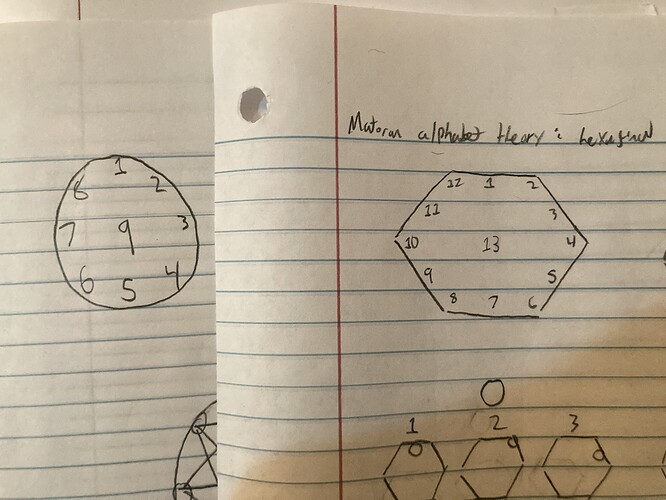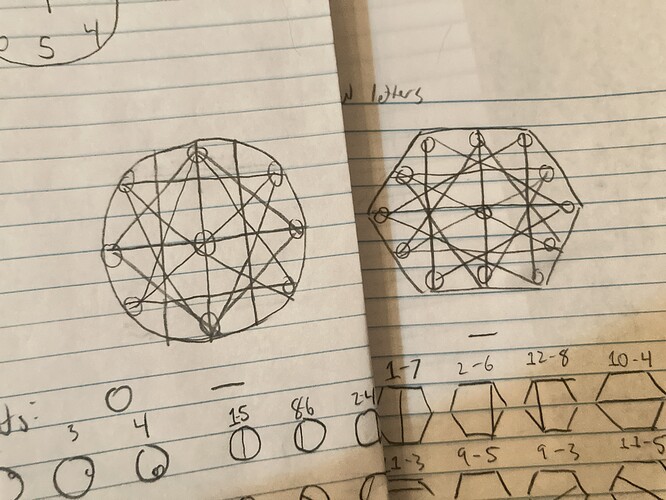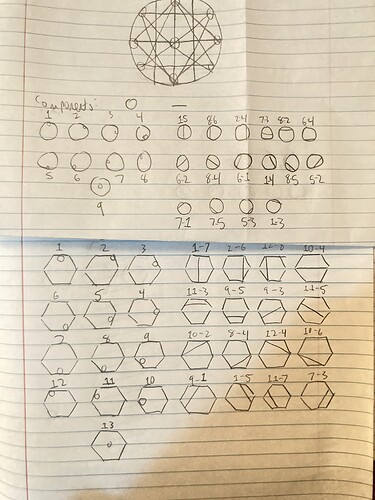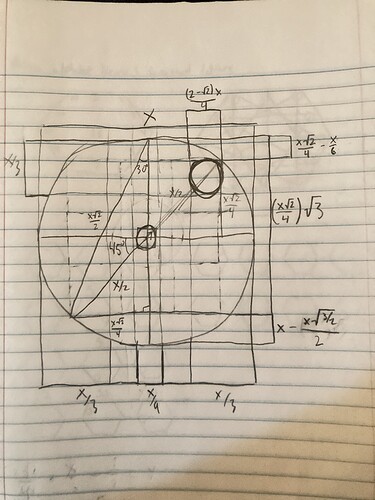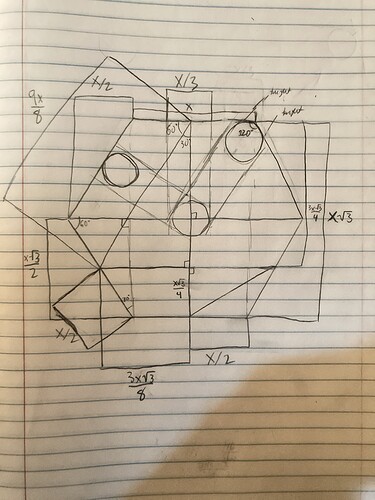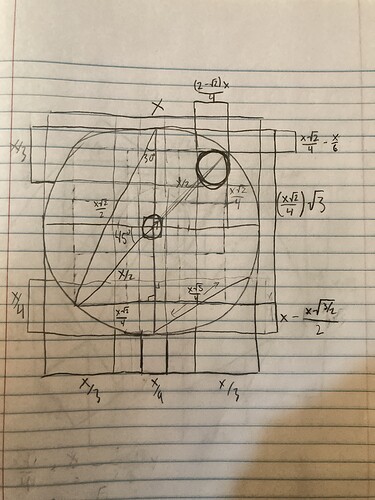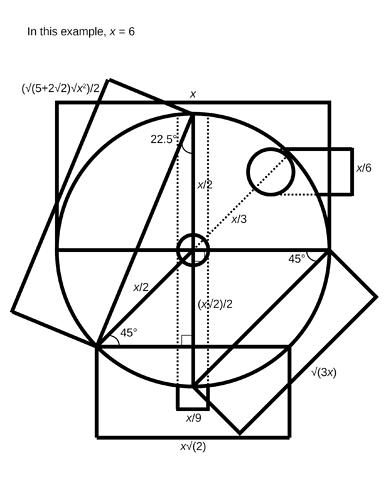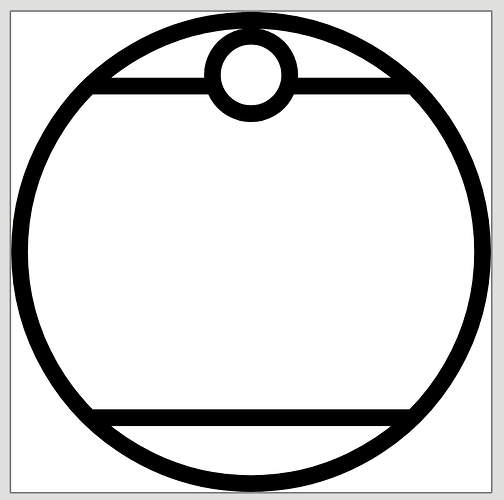I’ve had a little bit of a… fixation on the Matoran alphabet the last few hours. I’ve been analyzing the 57 canonical glyphs and I’ve broken them down into “theory sheets” and I’m working on design sheets for the two variants of the alphabet (circular octet style and hexagonal duodecad style). Let me illustrate to you what I mean.
The two styles of Matoran alphabet are circular octet and hexagonal duodecad. This refers to the outer shape of the glyph and the number of “positions” within the glyph (to be explained). Nepycros helped me come up with the theory that the circular octet style is a younger simplification of the hexagonal duodecad style, which is older and more formal.
Glyphs are made up of the outer shape and a number of “components”, which are circles and lines. Lines never intersect a circle (unless the glyph is a number, which have different position rules), and if a line intersects a line, it can end there. A line never ends without touching the edge of the glyph or another line.
Now, the positions. We’ll begin illustrating what I’m talking about with the aforementioned theory sheets. The glyphs can be divided into eight or twelve positions, like so:
The positions represent a point within the glyph where a line or circle can be placed. The 9th position (for the circular octet style) and the 13th position (for the hexagonal duodecad style) represent the point where numbers receive their central circle.
Next, we have the “ur-glyphs”. These are glyphs made up of all attested positions of line and circle.
Each circle and line can be named by the position it occupies, with circles receiving a designation of one number and lines receiving two hyphenated numbers, denoting their start and end points, right to left (and top to bottom if they are vertical).
Given the 57 glyphs, we have, for both styles, sixteen line possibilities (including mirrored versions of attested patterns, such as 7-5 and 1-3, which are mirrors of 7-1 and 5-3, which are attested in the glyph for Ö). The circular octet style has nine inner circle positions, including the central circle for numbers, and the hexagonal duodecad style has thirteen including the central circle. It’s notable that the hexagonal duodecad style has many more unattested line possibilities than the circular octet style.
With all of this data and info, I hope to be able to determine the number of possible glyphs. Unfortunately, I don’t think it’d be easy to calculate this with a simple math equation, the number of changing variables makes it unfeasible. Of course, it’s also pretty unfeasible to write out every possible glyph, so we’ll see what I can come up with.
The final fruit of all of this labor is the “design sheet”, a first-pass mathematical diagram I came up with for how an ideal circular octet glyph would look. I’ve calculated a lot of the lengths and ratios in here, and I have plans to digitize it and clean it up. I also want to make a version of this for the hexagonal duodecad style, but it’d be difficult to do that by hand.
Thanks for reading this diatribe. I hope to update this over the next few days with the digitized design sheet, the hexagonal design sheet, and some examples of never-before-seen glyphs.
